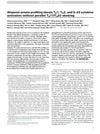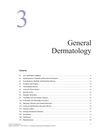Search
forLearn
5 / 5 resultslearn Neem Oil
natural substance from Neem tree with medicinal and pesticidal properties
learn Osteopontin
signaling protein that, when suppressed, may grow hair by reducing inflammation and stem cell loss
learn Procyanidin
bioflavonoid found in plants with antioxidant and hair stimulating properties
learn Alopecia Areata
autoimmune disorder causing patchy hair loss
Research
5 / 1000+ resultsresearch From In-Vitro to In-Vivo: Corporate Development and Efficacy of a Topical Hair Growth Agent Derived from Natural Extracts
A natural extract-based hair growth product was developed and showed promise in preliminary tests.

research Alopecia Areata Profiling Shows TH1, TH2, and IL-23 Cytokine Activation Without Parallel TH17/TH22 Skewing
Alopecia areata involves immune activation in the scalp, suggesting treatments targeting TH1, TH2, and IL-23 pathways.

research Chronic Inflammatory Diseases Stimulated by Current Lifestyle: How Diet, Stress Levels, and Medication Prevent Our Body from Recovering
Modern lifestyles, including poor diet, stress, and long-term use of certain medications, hinder the body's ability to heal from inflammation, leading to chronic diseases.

research General Dermatology: Comprehensive Overview of Dermatological Conditions
The document explains various skin conditions and their treatments.
research Expression of Signaling Components in Embryonic Eyelid Epithelium
Eyelid cells share signaling components but differ in pathway activity.
Community Join
5 / 28 results
community Compressed part of research of theory of androgenic/anabolitic balance. AGA h-responders analytic. Theory of physio-metabolitic method of anti AGA treatment
The treatment for androgenetic alopecia involves using finasteride and minoxidil with intense exercise and cold exposure to boost metabolism and reduce androgenic effects, potentially leading to hair regrowth. This approach may activate biological pathways for improved hair and overall health.
community GT20029 and PP405 the new fin and min that we been waiting for ?
PP405 and GT20029 are new hair loss treatments with different mechanisms from traditional options like Minoxidil and Finasteride. PP405 targets hair follicle stem cells to reactivate growth, while GT20029 works as an androgen receptor deleter, both requiring ongoing use for effectiveness.
community Quit vaping/smoking = 80% less loss
Quitting vaping significantly reduced hair loss for a user who was a heavy vaper and also taking finasteride. Some participants suggest nicotine's vasoconstrictive properties may worsen hair loss, while others share personal anecdotes of hair improvement after quitting smoking or vaping.
community Anti-oxidants that reverse hairloss?
Resveratrol and fisetin, found in red wine and strawberries, may promote hair growth by affecting hair follicle cells. Users discuss various treatments, including natural remedies like saw palmetto and topical applications, with mixed opinions on their effectiveness compared to pharmaceuticals like finasteride.
community HLT Megathread on HMI-115 (key takeaways in comments)
HMI-115, a newly discovered hair loss treatment that could potentially be effective for those with diffuse thinning and telogen effluvium. It is based on prolactin receptor antagonist signaling and has already undergone Phase I trials in women, with potential commercialization by 2027.